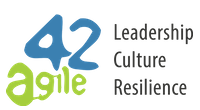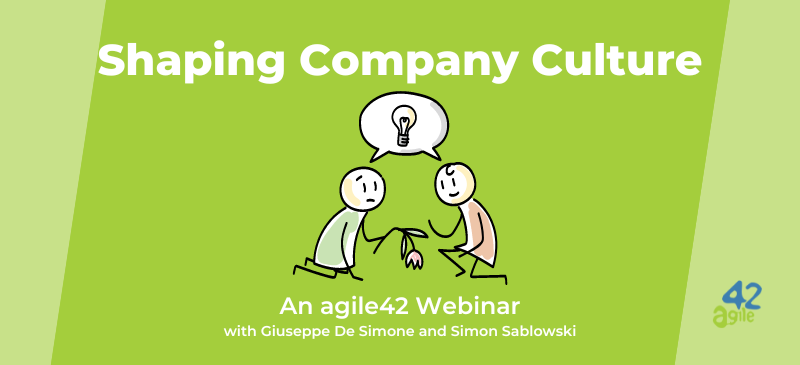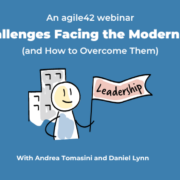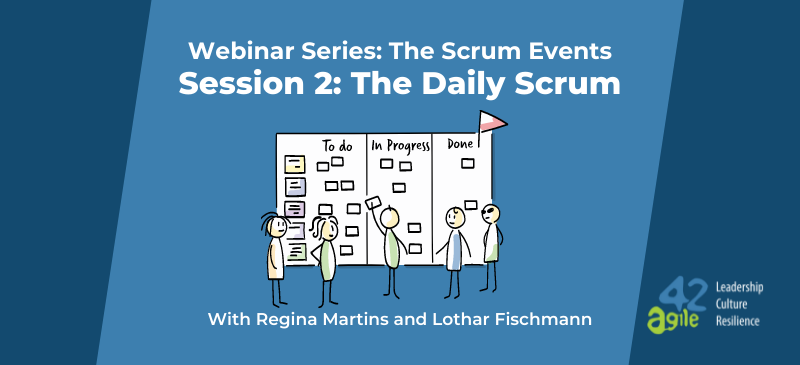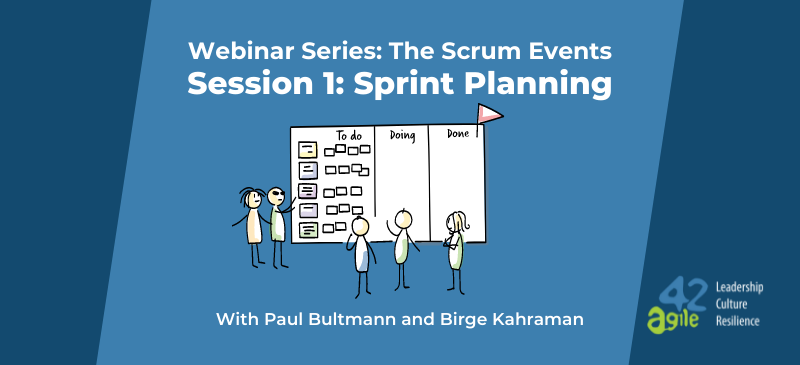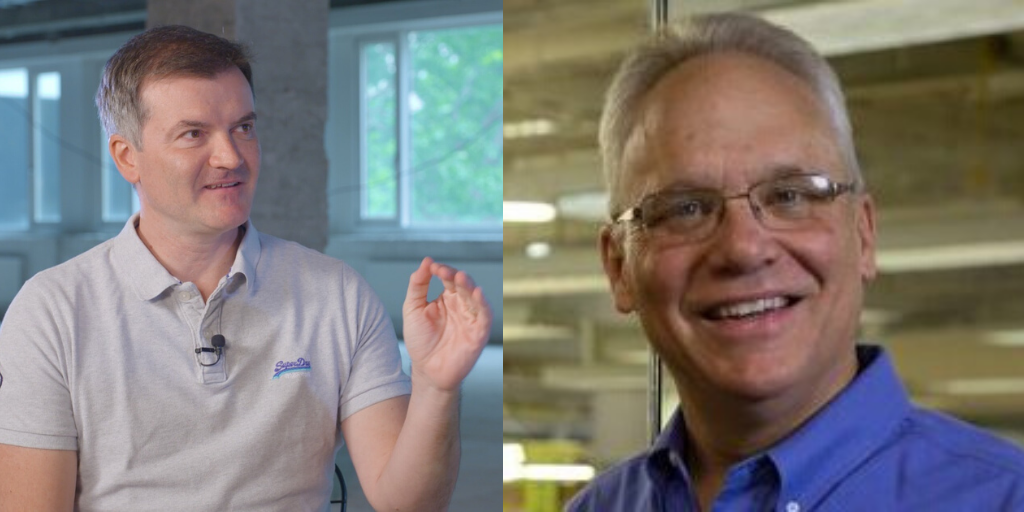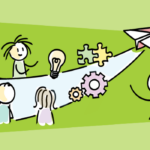Webinar | How to Improve Company Culture
Getting better results often requires a shift in organizational culture. But culture is about far more than just beanbags, table football, and free snacks.
While we can’t design company culture, we can influence and monitor it. In this webinar, Giuseppe De Simone and Simon Sablowski explore why a coherent organizational culture is so important and the different types of cultures that exist. They give a detailed guide on how we can influence and measure our company culture to build one that is more conducive to our goals, as well as how agile42’s OrgScan™ tool can help you to achieve this.
Watch | Shaping Company Culture Webinar
Read more about the OrgScan™.
Six Key Takeaways from the Webinar
1. A coherent culture is very important in today’s world
A toxic company culture can be harmful to your organization, and employee turnover can cost companies billions each year. Beyond that, company culture plays a crucial role in driving results and making sure companies reach their goals. This idea is summarized in the results pyramid, which describes the relationship between results and experiences. To reach a vision or goal, companies rely on the actions of their employees and how these are completed every single day. Our actions are rooted in our beliefs, and our beliefs are shaped by the experiences that we have.
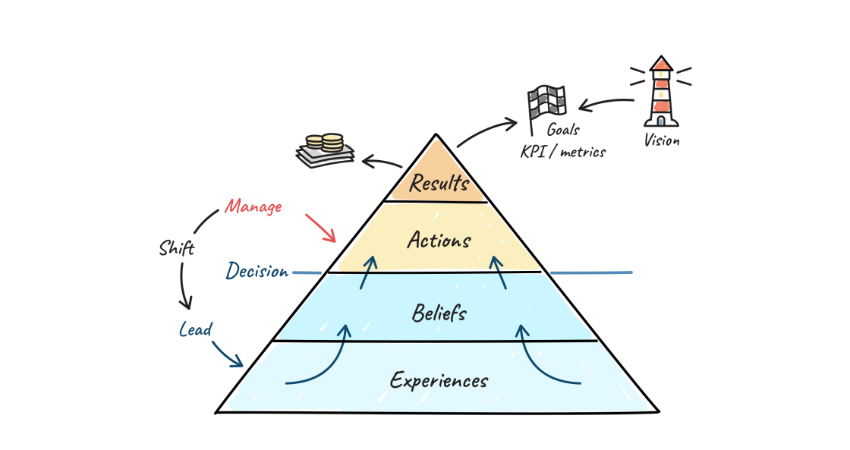
Agile organizations promote decentralized decision-making which can result in actions that do not align with a company’s goals. To overcome this, a coherent culture is necessary. Giuseppe De Simone emphasizes the importance of aligning rituals and beliefs with the company’s vision. A positive and productive work culture encourages open communication, employee development, and work-life balance. There is no right or wrong culture as long as it aligns with the needs and values of the organization, and its employees.
2. The Four Cs of Culture
There is no ideal culture, rather one that is more conducive to your goals or that fits the market that you currently find yourself in. A culture that wants to promote innovation is very different to one that wants to keep costs down and promote efficiency. This idea is summarized in the Competing Values Framework as described in the book, Diagnosing and Changing Organizational Culture: Based on the Competing Values Framework. This renowned model helps people to understand the beliefs and behaviors that make up their organizational culture.
The book identifies four types of culture in organizations:
- Collaborate: This type emphasizes the importance of teamwork, communication, and mutual respect between colleagues. The team performs works in a flat hierarchy to achieve common goals.
- Create: This type of culture encourages employees to take ownership of their work and encourages them to come up with new ideas and solutions to problems. These organizations value creativity, risk-taking, and innovation.
- Compete: In this style of culture, there’s a strong emphasis on delivering exceptional customer service. These teams typically go above and beyond to ensure they meet all customer’s needs.
- Control: This focuses on achieving measurable results. The company expects employees to achieve specific goals and reach certain targets, and closely monitors their employees.
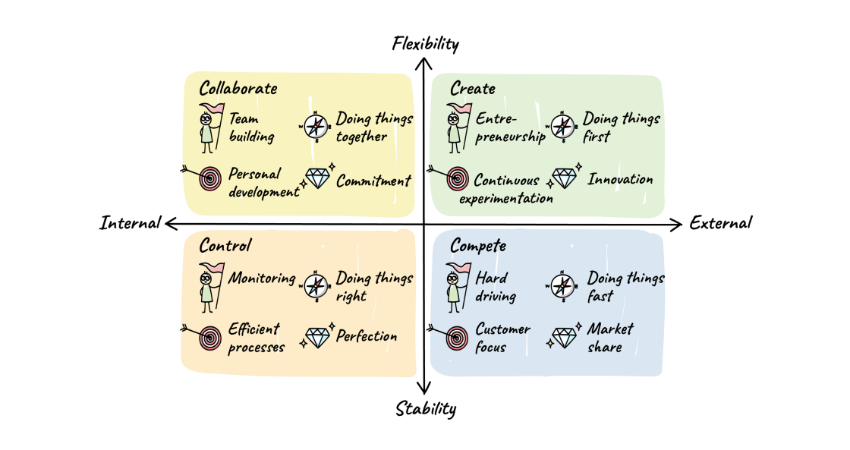
3. Designing your culture is impossible
Unfortunately, designing a coherent culture is impossible. Sablowski explains, “Culture is complex and that is why we can’t design it, we can only try to influence and nudge it.” Sablowski uses The Cynefin Framework to explain why. The Cynefin framework is a sense-making framework that helps us to understand situations and how we can best respond. And within this framework, culture falls into the complex category. In the complex category, cause and effect can only be understood in hindsight. So, we need to probe and experiment, and then monitor the effects. Only then can we influence our culture.
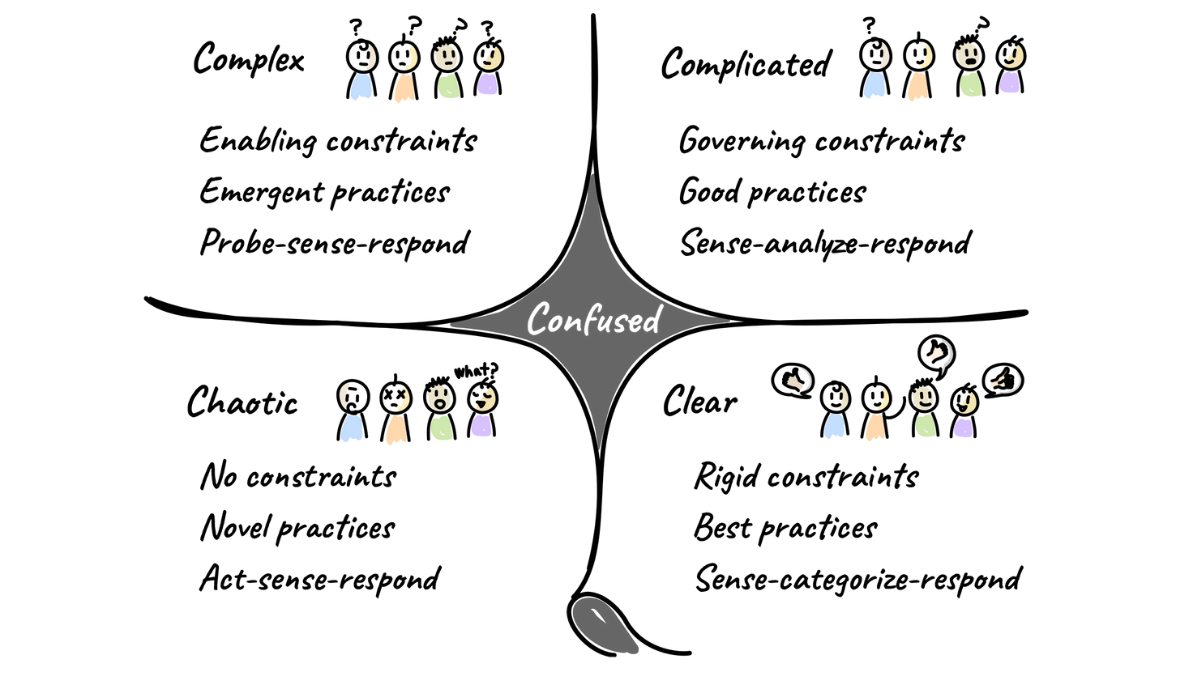
4. Stories can help us to make sense of our culture
To know where we want to go, we have to understand our current culture, and then track changes. If we want to identify and monitor these changes, the first thing we need to do is make our culture explicit and visible. Culture is not written on the wall but rather in the stories that people tell. Decisions are at the interface of what is invisible and what is visible.
How decisions are made within a company tells us a lot about its culture and how the organization is structured. The decision-making process can reflect the values and priorities of a company’s culture, whether it’s hierarchical or collaborative, innovative or risk-averse.
5. You can influence your culture
There are strategies that we can use to nudge our culture. The first technique is about distributed cognition, and making things visible is a big step toward change. Our Organizational Scan can help you to understand your culture by asking everyone in the company to record stories about how decisions are made in the company. “This can give us a picture of the company culture,” explains De Simone. Next, we collect the data and make it accessible to everyone. This empowers people to make changes within their teams or departments. Change happens with multiple small initiatives in complex environments. By cultivating more of the stories that we want and less of the ones that we don’t want, we can get closer to our desired culture.
For real-life examples of how we were able to collect this data and initiate change, read our organizational culture case study.
6. Culture and leadership are two sides of the same coin
No company is only present in one of the quadrants of the Competing Values Framework, which identifies the four types of culture in organizations as outlined above. A company’s culture should be well-balanced and appropriate for the organization’s goals and purpose. The only way to shift where a company culture currently sits is through leadership behavior. Moreover, when we introduce a new leadership behavior, we can cultivate better stories, which can significantly impact how people react. By doing so, we can create new stories of success that inspire and motivate others. According to De Simone, “We can’t change people; we can barely change the person we see in the mirror every morning.” Yet, we can nudge people’s beliefs through leadership behaviors.
A key component of shaping company culture is developing strong leadership capabilities and evolving with the culture as it changes over time. Leaders must be willing to adapt to the changing needs of the organization. This requires flexibility, creativity, and a willingness to take calculated risks.
Need help with your culture? Try our OrgScan and if you have any questions, please don’t hesitate to reach out.
